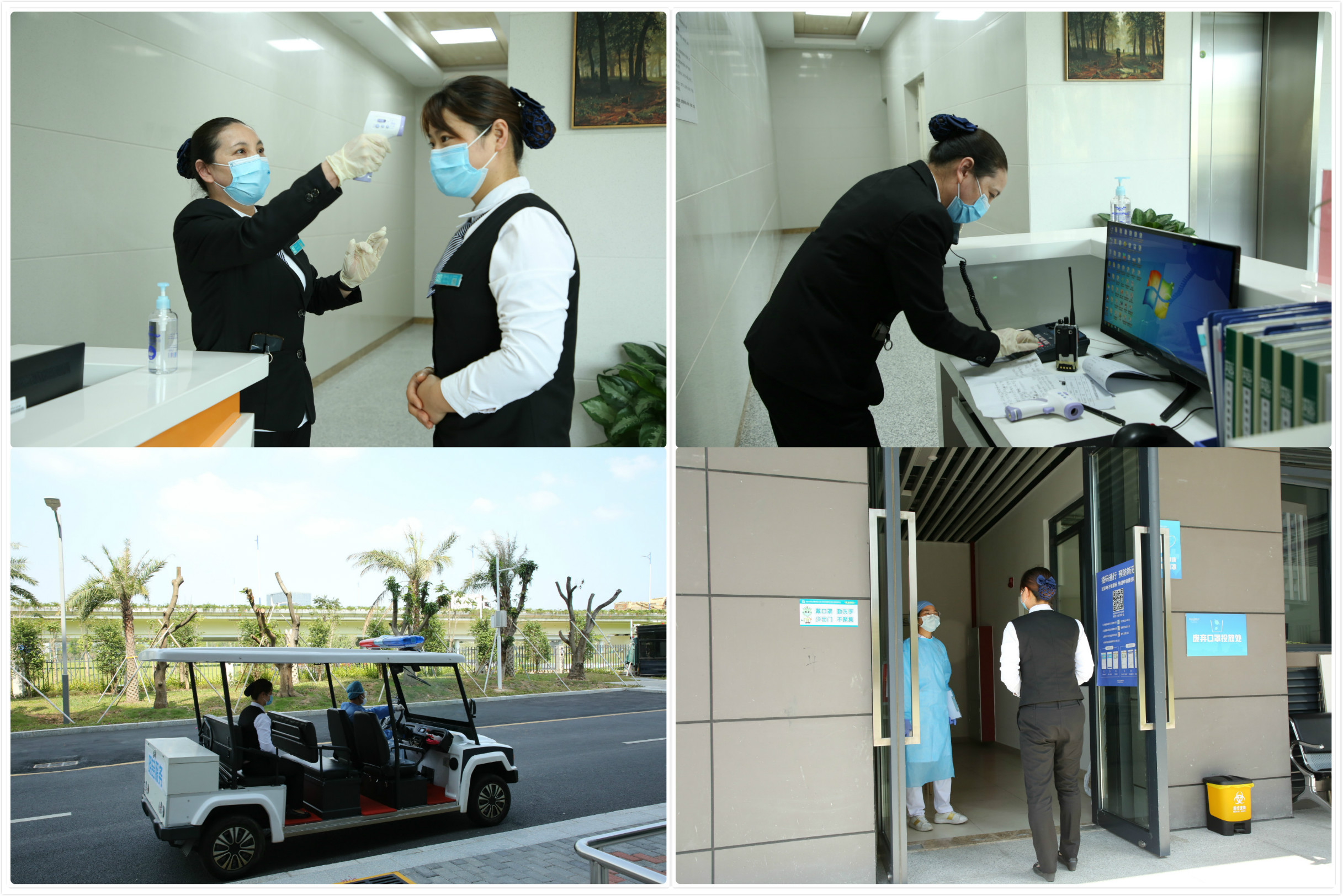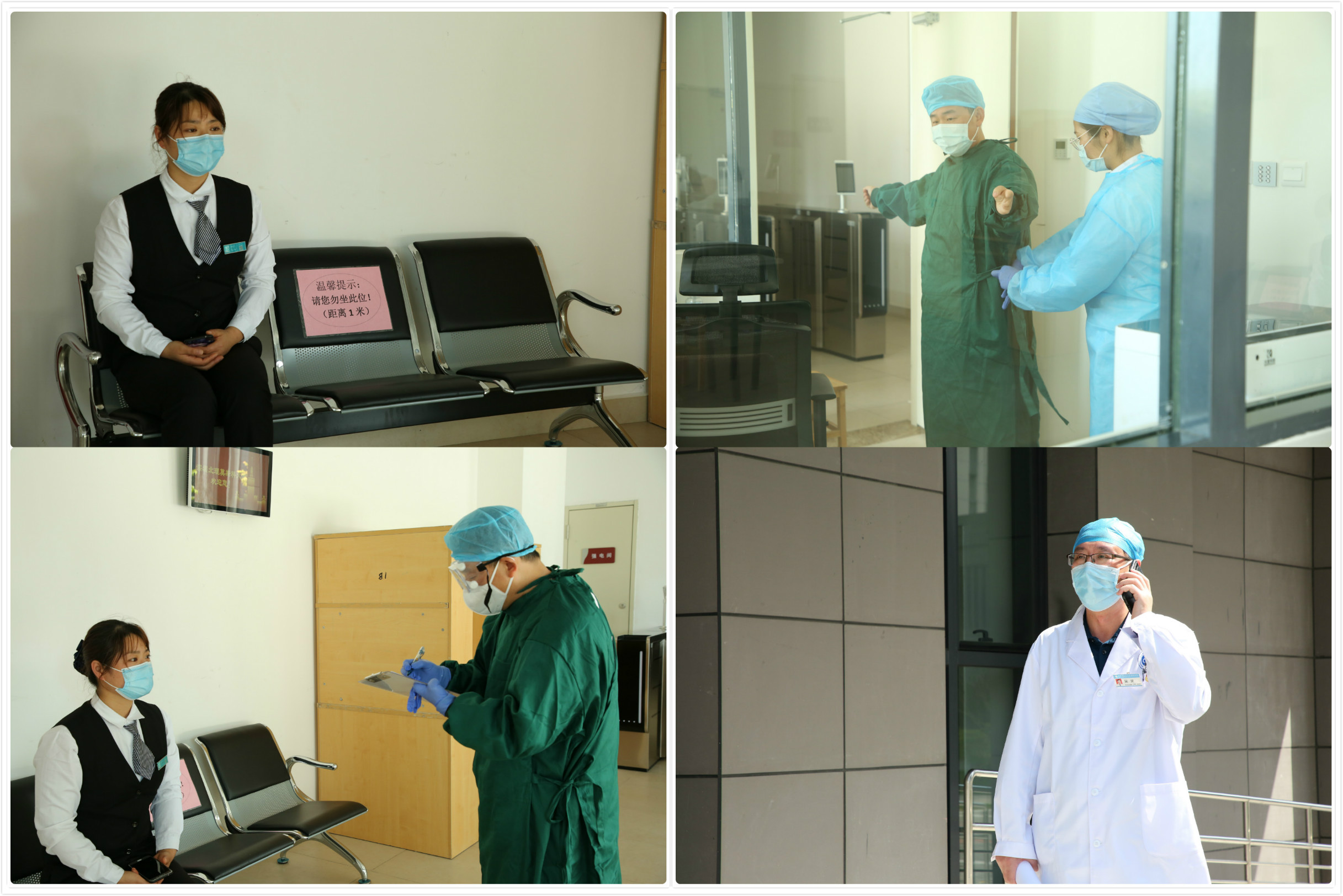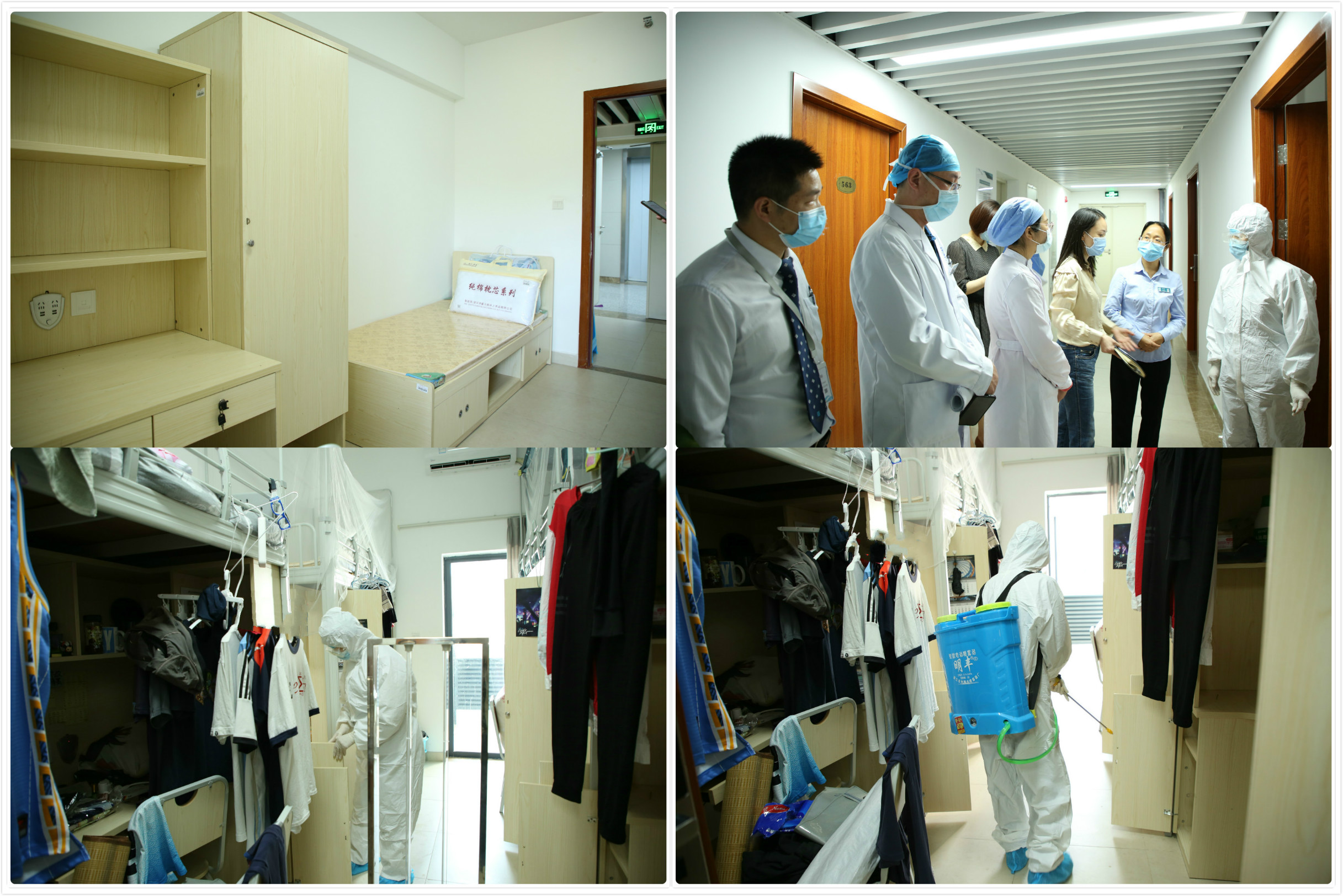To meet the requirements on COVID-19 prevention and control issued by the Ministry of Education and Guangdong Provincial Education Department, improve the University’s ability in dealing with emergencies, and ensure that teachers and students can return in a safe and orderly manner, on April 16, Shenzhen MSU-BIT University held a drill on COVID-19 prevention and control.

The drill simulates a returning student with abnormal temperature suspected of infection and includes the following stages: abnormal body temperature detection, epidemiological history check, transferring to the university or designated fever clinic, isolation of suspected cases as well as disinfection and sterilization.

On the drill site, one of the University’s houseparent confirmed that the student has abnormal temperature and reported immediately to competent departments and people including the work group for COVID-19 prevention and control, the University’s clinic, Student Affairs Office and the University’s property management team. On receiving the report, the personnel of each group acted quickly to transfer the suspected case to the University’s clinic. After standard diagnosis, the student is diagnosed as a suspected case of COVID-19, who then is transferred to a designated hospital by an ambulance.

Meanwhile, members of the University’s work group for COVID-19 prevention and control swiftly isolated those who have close contact with the suspected case and conducted contact tracing immediately as well as closed and disinfected dormitory rooms, classrooms and canteens. After the drill, medical staff from the Beijing University of Chinese Medicine Shenzhen Hospital gave lessons to the University’s staff on protective gear and disinfection procedures, making sure that all the protocols are followed during the transfer of patients and disinfection.
This drill has put the University’s emergency epidemic response to the test, helping the University accumulate precious expertise for similar events in the future. In the next stage, the University will further improve its institution and procedures concerning epidemic prevention and control and emergency response, making sure everyone can do his own part and form synergy in dealing with the current epidemic.